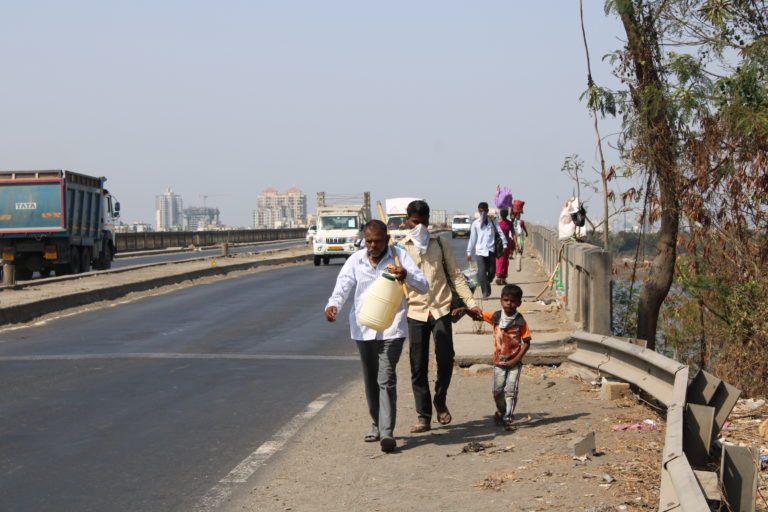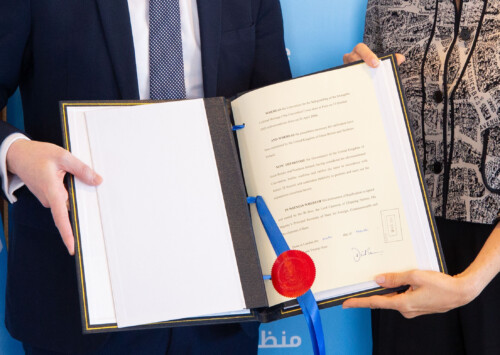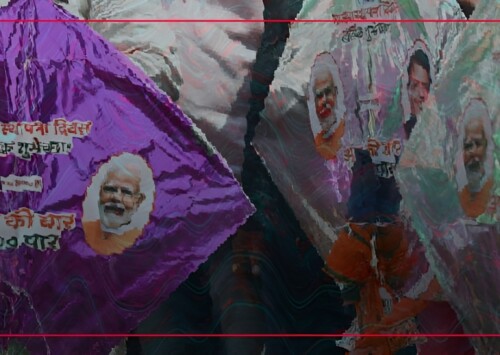Budget 2021: Focus on demand boost, inequalities & jobs

Sightings of groups of migrant workers were common along the Indian highways during the lockdown last year (MIG photos/ Varsha Singh)
Rare are the occasions when an Indian finance minister would pay heed to a report by a charity about what she needs to do in order to set the country’s malaise right. But on February 1, when union finance minister Nirmala Sitharaman steps up to present the union budget for 2021-22, she ought to indeed consider the report presented by British charity Oxfam on the dramatic situation of the marginal and the poor in India and the way they have been battered by the Covid-19 pandemic, while the wealth of the India’s wealthiest 1 pc has risen by as much as 35 pc, despite the pandemic.
Oxfam India says that the country’s inequality situation, already one of the worst in the world, has become even more tragic over the past one year and now India’s richest 1 pc hold more than four times the wealth held by the bottom 70 pc of the country’s population. It adds that the combined wealth of 63 Indian billionaires is higher than the total Union Budget for the fiscal year 2018-’19, or INR 2442.2 trillion.
The numbers may be stark but should not come as surprise to anyone who had watched tens of millions of migrants hit the roads in April-June 2020 going hundreds of km on foot to their homes as they could no longer afford to stay in the cities to which they had migrated for jobs and where they had been living. They had been forced to leave due to their job losses, which at over 120 million pushed the Indian unemployment rate to its highest in four decades, according to the CMIE, a Mumbai-based economy monitoring body.
As per the findings of Oxfam, 1,70,000 people lost their jobs every hour in April 2020. That was the harshest period of the first lockdown. After that, in varying phases, the workers started going back to work, but even after 10 months after the lockdown was announced on March 24 last year, the jobs have not gone back to the pre-lockdown level. A CMIE report says that many of the companies are making higher profits this fiscal at the cost of job contraction.
With most of them working in the unorganised sector or even the small and medium enterprises, there was little economic cushion provided by their employers and the government, too, failed to deliver anything more than a handful of grains to live by. Most of the economic policy actions of the government since the outbreak of the pandemic have only gone on to help the huge business conglomerates with attempts to push the supply side.
Big businesses were the prime focus of the much-hyped up economic revival packages of INR 20 trillion announced by the government a few months. The package was meant to help the companies continue to invest and revive the economy by not only saving jobs but also creating them. However, several reports have recently emerged highlighting that the investment levels have dipped to record low levels as most of the companies used the government funds only to pay off their debts, without creating any impact on the economy, save for boosting their own share prices and hence the wealth of the bosses and their shareholders. This deleveraging is perhaps one of the biggest underlying factors behind the record rise of the Indian stock markets which have doubled in valuations over the past eight months, the pandemic notwithstanding.
Most economists are calling for the budget to focus on the demand side, especially helping the poor half of the population, which has only become poorer over the year. A UNDP report suggested that the pandemic would push nearly 200 million Indians back into poverty and, of these, 40 million into extreme poverty. In contrast, another report a few months earlier, before the pandemic became a reality, had said that India had managed to lift 273 million out of poverty since the economic reforms began in 1991.
In such a scenario, it is vital for the government now to focus on the poor and the people, instead of businesses and business tycoons. “The critical issue in the forthcoming Budget is to recognise that the economic crisis is far from over for working people. Many of them are in debt, and earning a fraction of what they used to earn before the lockdown. The finance minister should resist pressures to spend huge amounts of public money on concessions for the middle class or the corporate sector in the name of economic stimulus. Economic support for poor people is a more effective way of reviving the economy,” noted developmental economist Jean Dreze tells Media India Group.
“What the country needs is not just a stimulus but also immediate relief for vulnerable households. The nice thing about putting money in poor people’s hands is that it serves both purposes in one go. It helps poor people, and also facilitates the revival of the economy by fortifying consumer demand. It also helps to tilt the composition of GDP towards what used to be called “wage goods”, that is, goods and services that are consumed by working people,” he adds.
Agreeing with Dreze, Oxfam India’s CEO Amitabh Behar says, “The gap between rich and poor can’t be resolved without deliberate inequality-busting policies, and too few governments are committed to these.”
One of the easiest ways for Sitharaman to make a direct and immediate difference to the lives of people is to look at schemes with huge outreach such as the Mahatma Gandhi National Rural Employment Guarantee Scheme, something that had been openly berated and almost battered to death by the government of Narendra Modi until it realised the immediate and important impact that the scheme made to the poor.
Oxfam says that just the increase in wealth of the top 100 billionaires could sustain MGNREGA for 10 years. These billionaires have reaped maximum benefits from the economic stimulus of the government.
Economists suggest that the wealthiest individuals and corporations are under-taxed and the government is failing to collect revenues that could help lift the responsibility of care from women and tackle poverty and inequality. Oxfam India says that if the richest are taxed just 0.5 pc extra tax over the next 10 years, it would equal the investment needed to create 117 million jobs in sectors such as elderly and childcare, education and health.
Oxfam also blames the government for underfunding pivotal public services and infrastructure that could help reduce the workload of women and girls. “Government must prioritise care as being as important as all other sectors in order to build more human economies that work for everyone, not just a fortunate few,” Behar adds.









